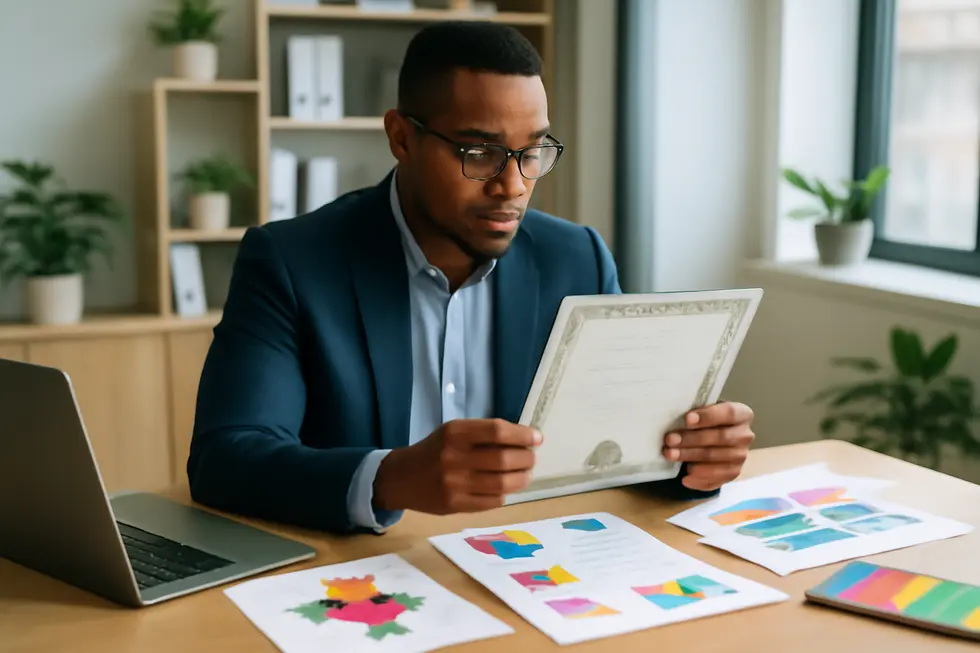Введение
For business owners, understanding the distinction between copyright and copywrite is crucial to protecting your creative assets and communicating effectively. While copyright grants legal rights to creators of original works, copywrite is often a misspelling confused with copywriting, which focuses on crafting persuasive marketing texts. Each chapter unpacks these differences: from legal foundations and protections to clarifying common misconceptions, identifying the scope of copyright, explaining registration and enforcement, and finally distinguishing copyright from marketing copywriting. This knowledge will help you protect your intellectual property while maximizing marketing potential safely and legally.
Оглавление
Chapter 1: Fundamentals of Copyright: Legal Protections for Creative Works
- Essential Criteria and Core Principles That Define Copyright Protection
- Navigating Copyright’s Exclusive Rights and Essential Limitations
- The Reach and Influence of Copyright Law: Balancing Creator Rights and Public Benefit
Chapter 2: Common Misconceptions: Differentiating Copyright from Copywrite and Copywriting
- Clarifying Copyright, Copywrite, and Copywriting Through Legal and Technological Lenses
- Economic and Professional Significance of Copyright Versus Copywriting and the Myth of Copywrite
- The Societal and Global Impact of Confusing Copyright with Copywrite and Copywriting
Chapter 3: Scope and Application of Copyright: What Works Are Protected and How
- Understanding Copyright Protections: Original Creations, Exclusions, and Legal Boundaries
- Navigating Copyright’s Exclusive Rights and Essential Limitations
- Navigating Copyright’s Reach: Territorial Boundaries and Media-Specific Protections
Chapter 4: Copyright Registration and Enforcement: Legal Channels and Digital Protections
- Navigating Copyright Registration and Enforcement: Legal Foundations, Procedures, and Digital Safeguards
- Amplifying Enforcement Power: The Critical Role of Copyright Registration in Litigation and Legal Remedies
- Bridging Borders and Bytes: Overcoming International and Technological Hurdles in Copyright Enforcement
Chapter 5: Copywriting as a Separate Discipline from Copyright: Marketing and Legal Distinctions
- Mastering Marketing Influence in Copywriting: Crafting Persuasive Messages Distinct from Copyright Protection
- Navigating Legal Protections for Copywriting: Copyright Boundaries and Intellectual Property Rights
- Unraveling the Clear Divide Between Copywriting and Copyright in Marketing and Legal Realms
Chapter 1: Fundamentals of Copyright: Legal Protections for Creative Works
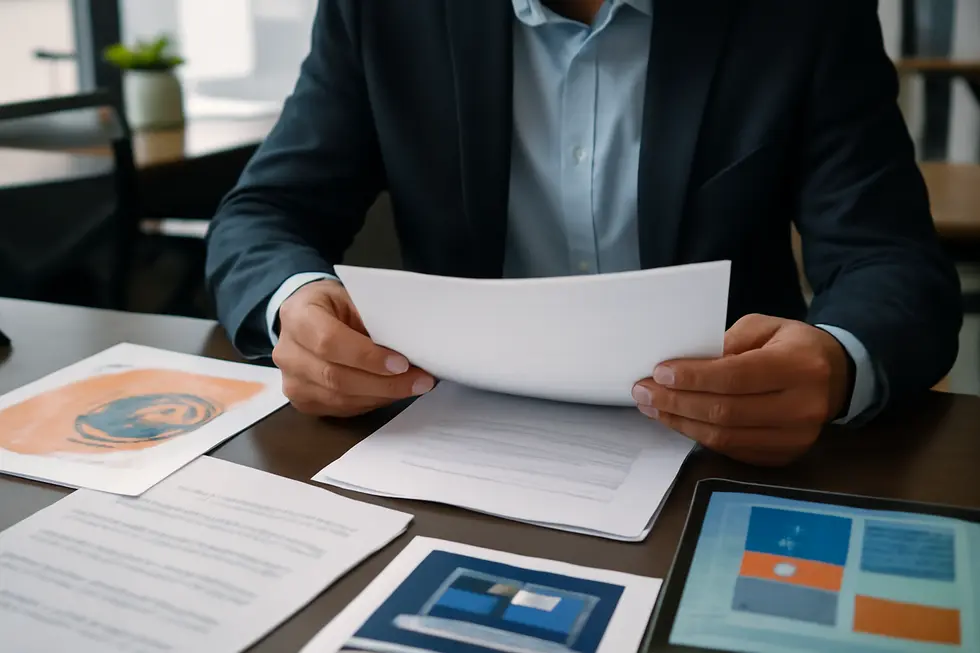
1. Essential Criteria and Core Principles That Define Copyright Protection
Copyright protection arises from a set of fundamental legal principles that secure creators’ rights over original expressions fixed in a tangible form. At its core, copyright shields the unique creative work of an author once it is captured in a perceivable medium—be it written text, recorded music, or visual artwork. To qualify for this protection, the creation must demonstrate originality, meaning it must be independently created and contain a minimal degree of creativity rather than being a mere copy of existing works. This requirement excludes facts, ideas, concepts, procedures, or methods, as copyright safeguards the specific expression, not the underlying ideas.
Equally crucial is the fixation criterion. A work must be recorded in some tangible form that endures beyond a momentary existence, such as being written, saved digitally, or recorded. This permanence ensures the work can be reproduced, communicated, or otherwise utilized within society. Without fixation, the abstract or fleeting nature of an idea would make it impossible to claim legal rights.
The scope of copyright grants creators exclusive rights including reproduction, public distribution, display, performance, and preparation of derivative works. These rights empower authors to control how their creative material is used and prevent unauthorized copying or exploitation. While copyright protection is automatic upon fixation, authors can strengthen their position through formal registration, which facilitates enforcement and legal remedies.
Copyright’s limited duration—typically the life of the author plus 70 years—balances private ownership rights with public access, encouraging further creativity to enrich culture. Recognizing these core concepts is vital to understanding how copyright functions as a legal framework that nurtures innovation and protects creative labor.
For more details on the legal framework and protections available for creative works, see Защита авторских прав на книги, фильмы и песни.
2. Navigating Copyright’s Exclusive Rights and Essential Limitations
Copyright grants creators a bundle of exclusive rights the moment their original work is fixed in a tangible form. These rights include reproduction, distribution, public performance, and display, all designed to give creators control over how their works are used and commercialized. Through these protections, copyright holders can prevent unauthorized copying or exploitation of their creations, establishing a legal framework that supports the creative economy.
However, these rights are not absolute; they operate within important limits and exceptions that ensure public interests are also served. Among these, the doctrine of добросовестное использование stands out as a crucial balance point. Fair use allows limited, unlicensed use of copyrighted material for purposes such as critique, commentary, news reporting, teaching, scholarship, and research. This exception is integral because it fosters free expression and new creativity by permitting some uses without the need for costly permissions.
Additionally, copyright owners may grant licenses that specify who can use their works and under what terms. Exclusive licenses empower a single party with the right to use the work, excluding even the creator during the license period. Nonexclusive licenses, by contrast, allow multiple users to access the work simultaneously under predefined conditions. These licensing options offer flexibility in managing and monetizing creative assets.
Enforcing these rights ultimately depends on the copyright holder, who may pursue legal remedies if infringement occurs. Courts and government agencies oversee disputes, ensuring that the legal protections function effectively while respect for limitations like fair use is maintained.
This framework of exclusive rights balanced with limitations promotes both protection for creators and access for society. For creators seeking to understand the nuances of enforcement and licensing, further insights can be explored in the basics of copyright law for businesses. To deepen understanding of fair use, consult the Memphis LibGuide on Fair Use.
3. The Reach and Influence of Copyright Law: Balancing Creator Rights and Public Benefit
The Reach and Influence of Copyright Law: Balancing Creator Rights and Public Benefit
Copyright law protects creators by granting exclusive rights over their original works from the moment those works are fixed in a tangible form. This automatic protection enables authors, artists, musicians, and other creators to control how their creations are used, distributed, and adapted. These rights incentivize innovation and artistic expression by allowing creators to profit from their labor and safeguard against unauthorized exploitation.
The scope of protected works is broad, encompassing literary, musical, dramatic, visual, audiovisual, and software creations, among others. While these rights are far-reaching, copyright does not extend to ideas, facts, or common knowledge, which remain freely accessible to all. This distinction preserves the public domain as a fertile ground for learning and further creativity.
Moreover, copyright law balances exclusive rights with important limitations and exceptions designed to serve the public interest. Fair use provisions, for example, enable commentary, criticism, education, and research without infringing on creators’ rights. This balance ensures cultural production continues to flourish in tandem with access and innovation.
The duration of copyright generally lasts for the author’s lifetime plus 70 years, supporting long-term economic benefits not only for creators but also their heirs. In cases of joint authorship or work-for-hire arrangements, rights ownership and duration can vary, often dictated by contractual agreements.
Ultimately, copyright shapes cultural and commercial landscapes by regulating how creative works circulate in society. It encourages investment in new works while fostering a dynamic ecosystem where creators’ rights coexist with public access. This legal framework underpins the vitality of arts, education, media, and technology sectors.
For those interested, more insights on the specifics of copyright protection for various types of creations can be found in Защита авторских прав на книги, фильмы и песни.
(Source: Fundamentals of Copyright Law)
Chapter 2: Common Misconceptions: Differentiating Copyright from Copywrite and Copywriting
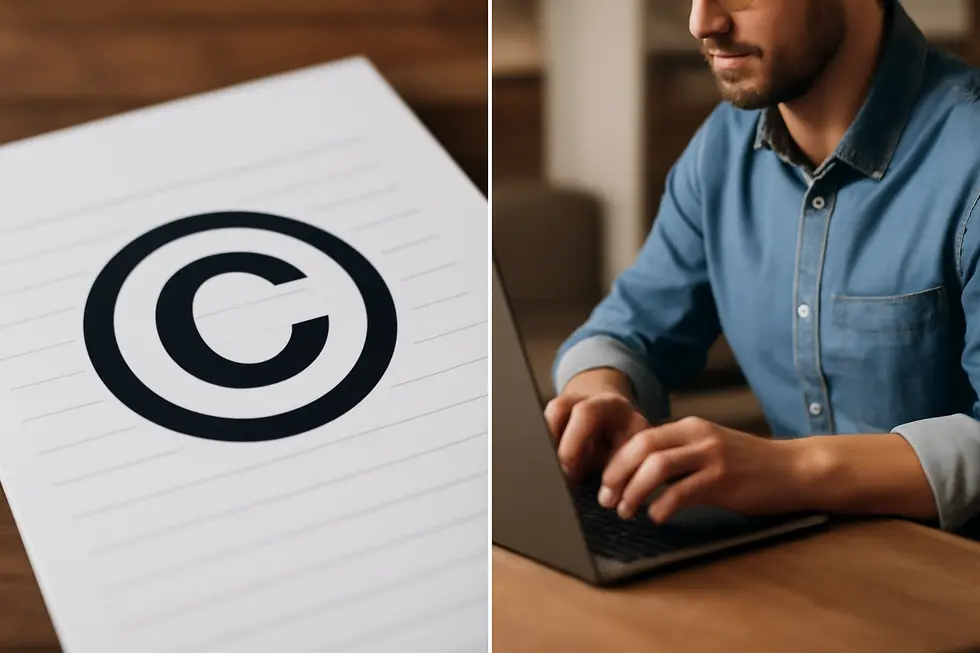
1. Clarifying Copyright, Copywrite, and Copywriting Through Legal and Technological Lenses
Copyright, copywrite, and copywriting are terms frequently interchanged, yet their meanings diverge significantly, especially in legal and technological contexts. At its core, авторское право is a legal right granted to creators of original works—literary pieces, music, art, software, and more. This protection automatically attaches the moment a work becomes fixed in any tangible medium. It empowers creators with exclusive rights to reproduce, distribute, and adapt their works, safeguarding them from unauthorized use. The duration of copyright protection typically extends several decades, reinforcing creators’ control over their intellectual property. In contrast, копирайтинг denotes a professional skill involving the creation of persuasive text aimed at marketing or advertising products and services. Copywriters craft compelling messages across diverse platforms, from print advertisements to digital campaigns, seeking to engage and convert audiences. Unlike copyright, copywriting itself is not a legal term but a commercial practice. The term copywrite is commonly a misspelling or misinterpretation of the former two and lacks any formal meaning. From a legal standpoint, copyright laws protect original creative content, which may include copywritten ads if they meet originality criteria. However, ownership and rights often depend on contractual agreements like “works made for hire,” where employers may own the copyright to advertising copy. Technologically, copyright extends its protection to digital creations including software code and multimedia files, ensuring these assets cannot be copied or exploited without authorization. Simultaneously, copywriting shapes the digital content landscape, producing website text, social media posts, and other promotional assets that may themselves be copyrighted once created. Recognizing these distinctions is essential to avoid confusion in intellectual property discussions and to clarify roles in content creation versus legal protection. For a deeper understanding of how copyright safeguards various creative works, see the detailed insights at Защита авторских прав на книги, фильмы и песни.
2. Economic and Professional Significance of Copyright Versus Copywriting and the Myth of Copywrite
Copyright, копирайтинг, and the oft-misused term copywrite are frequently conflated, yet their economic and professional implications are fundamentally different. Copyright is a legal mechanism that confers exclusive rights to creators over their original works—be it literary, musical, or artistic. This legal protection enables authors to control reproduction, distribution, and adaptation, and to monetize their creations through licensing or royalties. It also secures moral rights, such as attribution and the prevention of distortion, which are essential for preserving the creator’s reputation and professional integrity. These protections play a pivotal role in safeguarding intellectual property assets, effectively allowing creators to reap financial rewards and maintain control over their work in commercial and cultural spheres.
In contrast, copywriting is a commercial and creative discipline focused on crafting persuasive messages aimed at marketing products, services, or ideas. While copywriters produce original text, their role centers on audience engagement and conversion rather than legal ownership of content. This profession generates economic value through its impact on sales and brand communication, with copywriters often employed or contracted based on their ability to influence consumers. Unlike copyright, copywriting does not inherently grant ownership of the material created; such rights depend on contractual stipulations, such as ‘work for hire’ agreements, which may transfer copyright ownership to the client or company.
The term copywrite holds no legal or professional meaning and is merely a common misspelling of either copyright or copywriting, contributing no economic or professional weight.
Understanding these distinctions matters for creators, marketers, and businesses alike. Properly recognizing that copyright protects the legal rights of creative works while copywriting cultivates marketing content helps avoid costly misunderstandings concerning ownership, usage rights, and the scope of professional expertise. This clarity also ensures creators receive due compensation and respect for their intellectual property, while marketing professionals are accurately valued for their craft.
For deeper insights into how intellectual property protections support business assets, consider exploring effective business copyright protection strategies.
3. The Societal and Global Impact of Confusing Copyright with Copywrite and Copywriting
Copyright, copywriting, and the often misused term copywrite sound alike but serve fundamentally different functions, with significant societal and geopolitical consequences. Copyright represents a legal framework that safeguards original creative works—literary, artistic, musical, and more—granting creators exclusive rights to use and distribute their work. This legal protection ensures that creators control how their intellectual property is shared or exploited, typically lasting for the author’s life plus several decades. Misunderstanding copyright can lead to inadvertent infringement, undermining the legal rights established to reward and protect creativity.
In contrast, copywriting is a commercial and communicative craft that involves developing persuasive text to market products or services. It centers on influencing consumer decisions through carefully crafted messaging, without any inherent legal rights attributed to content ownership. The mistaken use of “copywrite” as a term only adds to confusion, as it lacks recognized meaning in legal or marketing contexts.
These misconceptions ripple into societal domains by blurring the line between legal protection and promotional activity. Creators risk losing control over their intellectual property if others mistake marketing content for ownership rights or fail to recognize when copyright applies. Simultaneously, businesses and marketers benefit from recognizing these distinctions, enabling them to engage in effective promotion without ambivalence about legal boundaries.
On a geopolitical scale, clear understanding is vital because copyright laws differ by jurisdiction yet often align under international treaties like the Berne Convention. Misinterpretations hinder enforcement across borders, complicating digital content distribution worldwide. Brands and creators navigating multiple markets must balance protecting their rights through copyright while employing copywriting strategies that resonate globally.
Grasping this separation empowers creators, marketers, and legal professionals alike to uphold legal protections and optimize communication strategies, fostering clearer rights management and better international collaboration.
For a deeper exploration of how copyrights function to protect various media in business, see Защита авторских прав на книги, фильмы и песни.
Chapter 3: Scope and Application of Copyright: What Works Are Protected and How
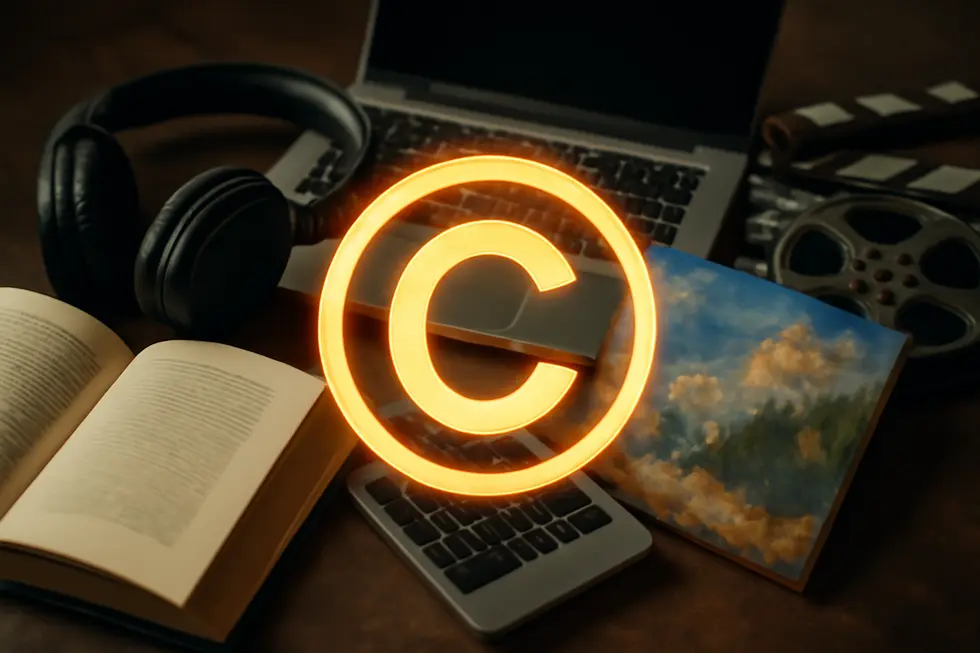
1. Understanding Copyright Protections: Original Creations, Exclusions, and Legal Boundaries
Copyright protects a diverse range of original works once they are fixed in a tangible form, granting creators exclusive rights over their use and distribution. This protection encompasses literary texts, musical compositions, artistic and dramatic works, films, software, and architectural designs. The essential requirements for protection are originality—the work must be independently created with some creative input—and fixation, meaning the work must be expressed in a form perceivable either directly or with technical aid, such as writing, recordings, or digital files. These criteria ensure that only a specific, concrete expression is safeguarded, not abstract ideas.
Fundamental to copyright is the idea-expression dichotomy, which excludes ideas, facts, procedures, systems, and general concepts from protection. These elements remain freely accessible for innovation, ensuring that knowledge and methods remain available for public use and further development. This legal boundary allows creators to claim rights only over the unique manner in which their ideas are presented, not the ideas themselves. Such exclusions prevent monopolies over common knowledge and facilitate continuous creativity and progress.
Alongside these core principles, copyright law includes critical limitations like fair use, permitting partial use without permission for criticism, commentary, education, or news reporting. These safeguards balance the creator’s rights with societal interests, enabling knowledge sharing and cultural enrichment. Additionally, while copyright law is territorial—applying within national jurisdictions—international agreements, such as the Berne Convention, harmonize protection standards worldwide so that creators benefit from broad, global coverage.
Recognizing this scope aids creators, businesses, and educators in understanding what can be protected and when legal use is permitted. For further insights into how copyright safeguards specific creative expressions, explore detailed discussions on copyright protections for books, movies, and songs.
Внешняя ссылка: U.S. Copyright Office, Copyright Basics
2. Navigating Copyright’s Exclusive Rights and Essential Limitations
Copyright grants creators a powerful set of exclusive rights, affording them control over their original works once fixed in a tangible form. These rights encompass the ability to reproduce the work, distribute copies publicly, perform or display it, and craft derivative works. Such exclusivity enables creators to manage how their content is used, licensed, and monetized across various media and geographic territories. However, these rights are time-limited, typically lasting many decades but eventually expiring to allow public access.
Despite the wide scope of copyright protections, the law carefully balances owner rights with public interests through well-defined exceptions. The fair use doctrine is pivotal, permitting uses such as commentary, criticism, reporting, teaching, and research without permission, provided factors like purpose, nature, amount used, and market impact are considered. Educational institutions also benefit from specific allowances to copy materials for classroom use under regulated conditions. In some jurisdictions, additional exceptions support libraries or accessibility for disabled persons, reinforcing copyright’s equitable application.
To qualify for these protections, a work must demonstrate originality, showing minimal creativity and independent creation, and be fixed in a tangible medium—from written text and recorded music to digital files or architectural designs. The scope covers a rich variety of works—literary, musical, dramatic, pictorial, audiovisual, sound recordings, and architectural creations. Exclusions include ideas, facts, short phrases, and government works, which are not subject to copyright, clarifying the boundaries of protection.
Ownership generally belongs to the creator but can shift through “works made for hire” or contractual agreements transferring rights. Licensing further allows permission for use without relinquishing ownership, fueling commercial exploitation under negotiated terms. Understanding these exclusive rights alongside their legal limitations helps creators and users alike navigate the complex landscape between protection and permitted use.
For a deeper dive into protecting creative content such as books, movies, and songs, you can explore copyright protection for creative works.
3. Navigating Copyright’s Reach: Territorial Boundaries and Media-Specific Protections
Copyright protection is fundamentally tied to territorial boundaries, applying only within the jurisdiction where a country’s copyright laws are enforced. For example, U.S. copyright law governs all 50 states and several territories like Puerto Rico and Guam, but does not extend to American Samoa, which follows different regulations. This geographical limitation means that creators must consider where their work will be used or distributed to understand the scope of legal protection and enforcement. In practice, this territorial nature complicates cross-border use and piracy enforcement, especially in the digital age where content flows globally.
Beyond geography, copyright protection is influenced by the type of medium involved. Different categories of creative works—literary texts, visual arts, music, software, audiovisual productions—may have distinct rules or licensing demands based on their medium and usage. Digital media, in particular, introduces complex layers of licensing that must reflect territorial and media-specific constraints, including how, where, and for how long content can be used. For example, streaming a film online involves licenses that account for the viewer’s location and the platform’s distribution rights.
International agreements like the Berne Convention, TRIPS, and the WIPO Copyright Treaty provide a framework that harmonizes certain minimum protections and standards globally. They establish baseline rights such as the term of copyright—typically the life of the author plus 50 or 70 years—yet enforcement and detailed rules remain under national authority. Creators and businesses, especially startups, must navigate this patchwork to safeguard their intellectual property effectively.
Licensing agreements further underscore how territorial and media-specific factors shape copyright application. Agreements specify not only how long rights last but also define the geographical scope where copyrighted works may be lawfully used or distributed. This layered system requires careful negotiation to ensure legal compliance and maximize the value of original works.
Understanding this complex interplay between territorial reach and media specifics is essential for protecting creative assets and confidently managing their exploitation within the legal landscape. For a deeper look at copyright protections across creative media, refer to insights on Защита авторских прав на книги, фильмы и песни.
For further authoritative guidance on the territorial nature and application of copyright law, consult resources from the World Intellectual Property Organization (WIPO) at https://www.wipo.int/.
Chapter 4: Copyright Registration and Enforcement: Legal Channels and Digital Protections
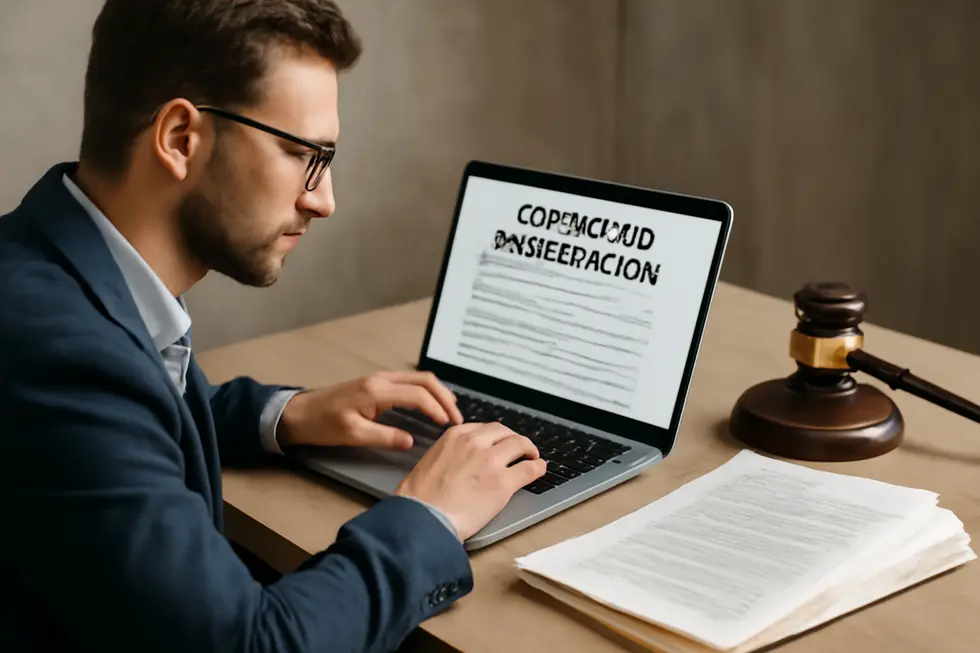
1. Navigating Copyright Registration and Enforcement: Legal Foundations, Procedures, and Digital Safeguards
Navigating Copyright Registration and Enforcement: Legal Foundations, Procedures, and Digital Safeguards
Copyright registration serves as a crucial legal safeguard that publicly affirms ownership of a creative work. By establishing a formal record, it empowers creators to initiate infringement litigation and access remedies such as statutory damages and attorney’s fees—benefits often unavailable without timely registration. While some jurisdictions allow late registration under specific exceptions, prompt filing typically strengthens legal standing. The procedural framework involves submitting an application along with copies of the work to the relevant copyright office, usually within a specific timeframe relative to the work’s creation or publication.
Enforcement primarily unfolds through judicial means, where registration is a prerequisite for suing alleged infringers. Successful plaintiffs may secure injunctions to halt unauthorized use, monetary damages, and recover profits generated from infringement activities. Administrative avenues supplement litigation—copyright collecting societies manage rights enforcement, and border authorities can intercept counterfeit goods. Criminal sanctions exist but vary widely in effectiveness depending on local infrastructure and resources.
In the digital realm, specialized frameworks address new challenges. The U.S. Digital Millennium Copyright Act (DMCA) establishes a notice-and-takedown system, obligating online platforms to promptly remove infringing content upon receiving valid infringement claims. This mechanism balances interests by protecting platforms under safe harbor provisions while allowing users to dispute claims via counter-notifications. Given divergent copyright laws globally, multinational platforms face complexities in DMCA compliance and enforcement.
Understanding these legal and procedural pillars is vital for creators and rights holders seeking effective protection. For deeper insight on the advantages of registering creative works, explore the benefits of copyright registration. Additional context on global enforcement and digital compliance can be found in this comprehensive analysis: how international copyright laws align or conflict with DMCA.
2. Amplifying Enforcement Power: The Critical Role of Copyright Registration in Litigation and Legal Remedies
Copyright registration is a pivotal step that significantly strengthens the enforcement of rights granted to creators. While copyright protection arises automatically upon the fixation of an original work, formal registration provides legal advantages that can drastically affect the outcome of enforcement efforts. Most notably, registration creates a public record, clearly establishing ownership and deterring infringement by signaling to potential violators that the work’s rights are formally recognized. It also serves as prima facie evidence of validity and ownership in court, simplifying the burden of proof for the copyright holder and making enforcement actions more straightforward.
Beyond evidentiary benefits, registration unlocks access to enhanced legal remedies unavailable to unregistered works. These remedies include statutory damages and attorney’s fees, which serve both as significant deterrents and as means to fully compensate rights holders for unauthorized use. Courts generally require registration before hearing infringement claims, underscoring its importance as a procedural threshold. Timely registration, ideally before or within a narrow window after the first infringement, is crucial to maximize these enforcement benefits. For unpublished works or where registration occurs soon after infringement discovery, some relief may still be preserved.
Enforcement extends beyond civil litigation; administrative tools such as border controls and criminal penalties provide additional protection but vary widely across jurisdictions. Software creators, despite automatic protection, benefit from registration that enables better enforcement and statutory damages internationally, aided by agreements like the Berne Convention. Online platforms operating under laws such as the DMCA must also designate agents and follow clear takedown procedures to balance enforcement and platform liability protections.
Understanding the multifaceted benefits of copyright registration equips creators to navigate enforcement effectively and to safeguard their rights against infringement. For a deeper exploration of copyright protection strategies, see this detailed resource on Защита авторских прав на книги, фильмы и песни.
For further reading on the necessity of registration in litigation, refer to this insightful analysis on the consequences of failure to register in enforcement cases.
3. Bridging Borders and Bytes: Overcoming International and Technological Hurdles in Copyright Enforcement
Effective copyright registration and enforcement today grapple with intricate international and technological challenges. Although treaties like the Berne Convention, the WIPO Copyright Treaty, and the TRIPS Agreement establish minimum standards for protecting copyrighted works globally, they do not create a unified enforcement system. These agreements require countries to protect foreign works, often without demanding formal registration, yet enforcement depends heavily on each nation’s legal framework. This territorial nature means copyright holders must pursue allegations of infringement within national courts, complicating cross-border disputes.
Technology further complicates enforcement. The rise of digital distribution—through streaming, downloads, virtual and augmented reality, and AI-created content—introduces infringement forms not anticipated by traditional laws. Online platforms, operating in multiple jurisdictions, face conflicting obligations. For instance, U.S. law’s DMCA grants platforms a “safe harbor” when infringing content is promptly removed, yet in the European Union, proactive filtering to block infringing uploads is mandated. This patchwork creates compliance complexities and enforcement gaps.
Additionally, new tools like blockchain offer promising avenues for tracking and verifying ownership rights with decentralization and transparency. However, such technologies remain in early stages and require extensive legal reforms before becoming practical enforcement mechanisms worldwide.
Diverse judicial processes, evidentiary standards, and remedies across countries add another layer of complexity to multinational copyright cases. Coordinated strategies combining treaty adherence and adaptive technologies are essential. Global organizations continue to refine cooperation guidelines, but territorial limitations and rapidly evolving technology ensure ongoing challenges.
For creators and legal professionals, understanding these dynamics is vital for navigating enforcement. Detailed insights into these international enforcement challenges can be explored further at WIPO’s official resources.
For a comprehensive overview of the importance and benefits of formal copyright protection, see this in-depth discussion on Защита авторских прав на книги, фильмы и песни.
Chapter 5: Copywriting as a Separate Discipline from Copyright: Marketing and Legal Distinctions
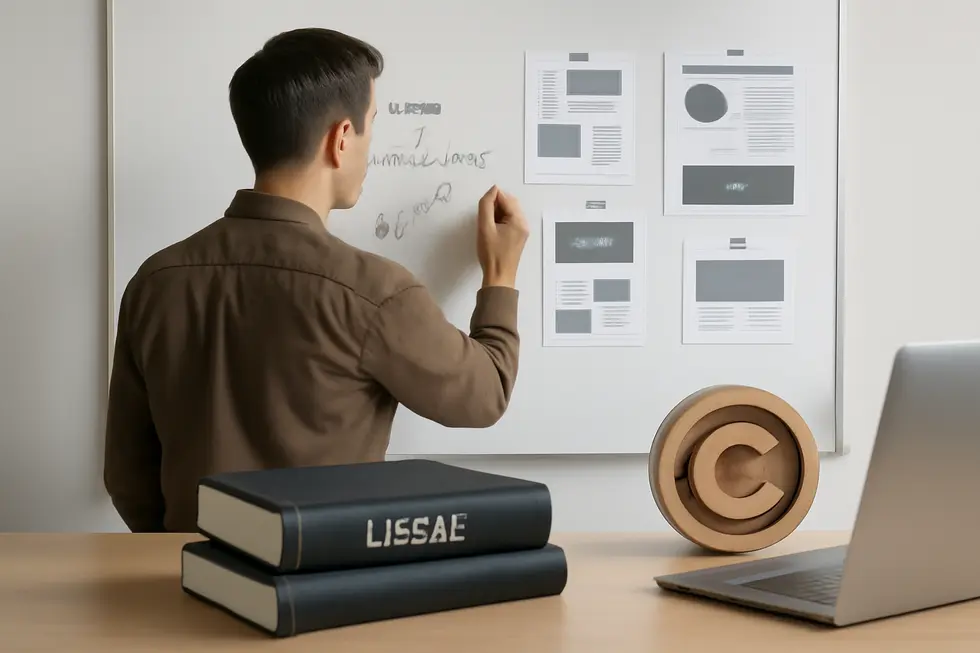
1. Mastering Marketing Influence in Copywriting: Crafting Persuasive Messages Distinct from Copyright Protection
Copywriting is fundamentally a marketing discipline dedicated to creating persuasive text designed to engage and convert audiences. Unlike copyright, which is a legal mechanism protecting the creator’s original works from unauthorized use, copywriting focuses on strategically crafting messages that resonate deeply with target audiences to drive action and build brand loyalty. Successful copywriters immerse themselves in understanding the emotional drivers, preferences, and pain points of their audience, tailoring language to create connection and clarity. They employ storytelling, emotional triggers, and narrative flow to sustain attention and inspire the reader toward desired outcomes, such as making a purchase, signing up, or sharing content.
This marketing-centered approach balances creativity with tactical objectives. Writers carefully sculpt every phrase to reinforce a brand’s unique value proposition, differentiate it from competitors, and establish trust through a consistent voice and tone. While copyright provides the legal rights to protect the tangible content created, it does not influence the marketing quality or impact of that content. Instead, copyright ensures the writer or creator maintains control over how their original work is used or reproduced—serving as a safeguard rather than a marketing tool.
Understanding this distinction is vital for marketers and brand strategists who rely on copywriting as a growth engine, shaping audience perceptions through compelling communication, all while respecting the legal protections that copyright offers to preserve intellectual property. More about the legal coverage of creative works can be explored in relation to Защита авторских прав на книги, фильмы и песни.
For a deeper dive into the specific marketing skills that make copywriting effective—such as audience analysis and emotional appeal—external resources like Marketer Magazine provide valuable insights. Ultimately, copywriting and copyright serve complementary but distinctly different purposes: one crafts influence, the other secures ownership.
2. Navigating Legal Protections for Copywriting: Copyright Boundaries and Intellectual Property Rights
Copywriting occupies a unique space where creative marketing intersects with legal safeguards. While copyright law itself protects the original expression of ideas fixed in a tangible medium, it does not cover the underlying concepts or marketing strategies behind the text. This essential distinction means that a copywriter’s crafted text—such as slogans, advertisements, or promotional content—is immediately entitled to copyright protection once recorded in print or digital form, granting rights to reproduce, distribute, adapt, and publicly communicate the work.
However, these protections do not extend to the ideas that inspire the text, allowing clients and competitors to employ similar concepts without infringing copyright. This emphasizes the need for clear contractual agreements between copywriters and clients, defining intellectual property ownership, usage rights, and any licensing arrangements. Without explicit contracts, default copyright ownership resides with the copywriter, which can lead to misunderstandings over usage and rights.
Moreover, copyright protection varies by jurisdiction but benefits from international agreements like the Berne Convention, which harmonizes key standards globally. The doctrine of fair use introduces further complexity, permitting limited use of copyrighted copywriting materials for purposes like criticism, commentary, or education, provided certain conditions are met. Fair use’s applicability depends on factors including purpose, nature, and the amount of content used, as well as the potential market impact.
For copywriters and clients alike, understanding these legal boundaries clarifies what aspects of creative marketing writing can be protected and what remain open to broader use. This understanding allows both parties to structure their collaborations to safeguard original content effectively while respecting lawful exceptions.
For deeper guidance on intellectual property rights as they pertain to copywriting, the Basics of Copyright Law for Business offers valuable insights aligned with current legal frameworks.
3. Unraveling the Clear Divide Between Copywriting and Copyright in Marketing and Legal Realms
Copywriting и авторское право are often mistaken as interchangeable terms due to their similar spelling, but they represent fundamentally different concepts with distinct roles in marketing and legal contexts. Copywriting is the art and craft of composing persuasive text intended to engage audiences and spur commercial actions such as purchases or inquiries. It involves creating compelling messages for advertisements, websites, emails, and other promotional materials. As a creative communication skill, copywriting operates within the domain of marketing, aiming to connect consumers with products or services through carefully crafted language.
In contrast, copyright is a legal safeguard that protects the выражение of original ideas once fixed in a tangible medium—whether in written works, music, films, or visual art. This intellectual property right grants creators exclusive control over how their works are used, reproduced, and distributed. Copyright functions to prevent unauthorized exploitation, ensuring that creators can authorize or restrict others from copying or adapting their original outputs. Unlike copywriting, copyright is enforceable under the law and hinges on protecting ownership rather than generating commercial appeal.
This distinction deeply affects both marketing professionals and legal practitioners. Copywriters produce the actual content that copyright protects, yet the act of writing with a commercial purpose does not, by itself, confer legal rights. Confusing these terms can lead to misunderstandings about ownership, usage rights, and the protection of creative works. For creators and marketers alike, it is essential to recognize that while copywriting delivers the persuasive content needed for campaigns, copyright provides the legal framework that defends that content from misuse.
Understanding this divide clarifies roles and responsibilities within brands and businesses. Those crafting marketing messages rely on copywriting expertise, while protecting those messages and other creative works requires knowledge of copyright law. For a deeper exploration of copyright legal protections, see Защита авторских прав на книги, фильмы и песни.
Заключительные мысли
For business owners, correctly understanding the difference between copyright and copywrite is essential for protecting valuable creative assets and effectively promoting your brand. Copyright provides robust legal safeguards for your original works, safeguarding against unauthorized use, while copywriting serves as a powerful marketing tool to engage and persuade audiences. Misunderstanding these terms can lead to missed legal protections or marketing missteps. By mastering both concepts, you can confidently secure your intellectual property, navigate registration and enforcement, and leverage compelling marketing communications that respect legal boundaries. Investing time and effort into this knowledge lays the foundation for long-term brand integrity and business success.
Получите свой товарный знак сегодня! Тысячи людей защитили свой бренд, подав заявку на товарный знак. А чего ждете вы? Начните подавать заявку на товарный знак!
О нас
The globe’s top website for registering trademarks and safeguarding your brand, name, logo, or slogan, offering streamlined services to protect your business assets and ensure strong, enforceable legal ownership.

